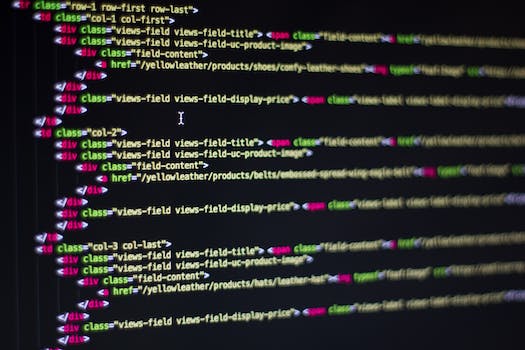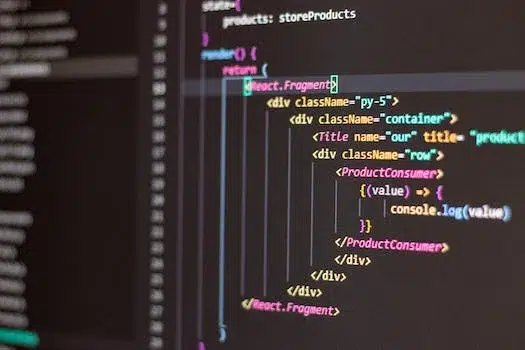Introduction: Understanding the Concept of No-Code Development
In the rapidly evolving digital landscape, the concept of No-Code Development is gaining significant traction. Simply put, No-Code Development is a revolutionary approach that empowers non-programmers to create functional applications without writing a single line of code. This innovative method leverages visual interfaces with drag-and-drop features and pre-built templates, making the process of app development more accessible, efficient, and democratic. It’s at the exciting intersection of design and technology, where users can transform their creative ideas into functional realities, without the need for complex coding skills. This blog will delve into the world of No-Code Development, highlighting its role in bridging the gap between design and technology.
The Evolution of Design and Technology in Software Development
The evolution of design and technology in software development has been nothing short of revolutionary. With the advent of no-code development platforms, the intersection of design and technology has become more seamless and integrated than ever before. No longer do you need to master complex coding languages to create functional and visually appealing software. No-code platforms empower anyone to design and build software using intuitive, drag-and-drop interfaces. This has democratized software development, making it accessible to individuals from all walks of life. The fusion of design and technology in this manner has not only streamlined the development process, but also opened up a world of creative possibilities.
The Emergence of No-Code Platforms: A Game Changer
The emergence of No-Code platforms has revolutionized the landscape of software development, becoming a real game-changer. These platforms have broken the barriers between design and technology, enabling individuals without a technical background to create apps, websites, and digital products. With a user-friendly interface and intuitive drag-and-drop features, users can now design and bring their ideas to life without writing a single line of code. This intersection of design and technology in no-code development has democratized the creation process, fostering innovation and creativity across various industries. No-Code platforms are a testament to how technology can be simplified and made accessible for all, truly a notable shift in the digital world.
The Role of Design in No-Code Development
The role of design in no-code development is pivotal as it bridges the gap between technology and user experience. It’s the design that allows users to visualize and interact with the backend processes in a user-friendly manner. In this context, no-code development platforms empower non-technical users to create functional applications without writing a single line of code. The design tools in these platforms translate users’ visual inputs into working applications, making design a critical component in no-code development. Therefore, an effective design not only enhances the aesthetics but also simplifies complex processes, leading to efficient problem-solving and improved user satisfaction.

How Technology Powers No-Code Development Platforms
Advancements in technology are the driving force behind the rise of no-code development platforms. These platforms leverage user-friendly interfaces and drag-and-drop features, allowing individuals to create applications without the need for coding knowledge. Innovative tools and algorithms automate the coding process in the backend, enabling users to focus solely on the design aspect. This means, even non-technical users can build sophisticated applications, making technology more accessible and inclusive. Thus, technology empowers no-code development platforms, democratising application development and fostering a new generation of digital creators.
The Symbiotic Relationship Between Design and Technology in No-Code Development
No-code development is a clear example of the symbiotic relationship between design and technology. In this context, design refers to the intuitive, user-friendly interfaces that allow even non-technical users to build applications, while technology refers to the advanced algorithms and systems that make this possible. Without the seamless integration of these two elements, no-code development wouldn’t exist. Design makes technology accessible and usable, while technology empowers design with limitless possibilities. In essence, the success of no-code development is hinged on the perfect marriage of design and technology.
Case Study: Successful Applications of No-Code Development
In our case study, we explore successful applications of no-code development, demonstrating the dynamic intersection of design and technology. Companies like Webflow and Bubble have revolutionized the way we build websites and apps, empowering even non-tech savvy individuals to create complex solutions without writing a single line of code. They’ve utilized intuitive drag-and-drop interfaces and visual development environments to bridge the gap between design and coding. This has resulted in faster project turnaround times, reduced development costs, and increased productivity. Not only has this democratized software development, but it has also allowed businesses to test ideas rapidly and pivot efficiently when needed.

The Future of Design and Technology in No-Code Development
The future of design and technology in no-code development is set to revolutionize how we create and operate software. This intersection is all about empowering non-technical individuals to create functional and visually appealing digital products without needing to write a single line of code. Advanced drag-and-drop interfaces, visual programming environments, and automated back-end services are making it easier than ever to develop apps, websites, and more. This not only democratizes the development process but also accelerates it, reducing the time from concept to launch. As these no-code tools continue to evolve, we can expect a future where anyone, regardless of their technical knowledge, can bring their ideas to life with ease and efficiency.
Challenges and Opportunities in the Intersection of Design and Technology in No-Code Development
The intersection of design and technology in no-code development presents both unique challenges and exciting opportunities. On the challenges side, the simplicity of no-code tools can sometimes limit creativity and customization, as they often come with preset templates and structures. It could also be difficult to incorporate complex functionalities or unique user experiences. However, the opportunities are immense. These tools allow non-technical individuals to create functional and aesthetically pleasing designs with ease. They democratize the process of design and development, opening up the field to a wider array of individuals. Furthermore, the time saved on coding can be used to focus more on the design aspect, potentially leading to more innovative and user-centric solutions.
Conclusion: Embracing the Shift Towards No-Code Development
In conclusion, the shift towards no-code development is an exciting evolution in the intersection of design and technology. It empowers non-technical individuals to create, innovate, and solve problems without the need for extensive coding knowledge. This democratization of technology design is not only increasing efficiency but also fostering a more inclusive tech environment. It’s high time we embrace this change, recognizing its potential to break down barriers, inspire creativity, and open up a world of new opportunities. No-code development is not just a trend, it’s the future of tech design.





